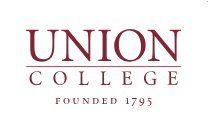Glossary
Item:
The records used to build an Omeka S Site. Items are shared and available to any Site in an Installation, unless explicitly excluded from sharing.
"Item level page":
This refers to the page when you click on an item. This page will show the item's full metadata, the item sets to which it belongs, and sometimes tags, comments and mapped location when applicaple.
Item Set:
An aggregation of Items. Items can belong to any number of Item Sets.
Media:
Additional representations or descriptions of an Item, beyond metadata from vocabularies. Typically, this refers to a File (of any type, including, e.g., text or HTML snippets), but could also refer to external data sources such as a YouTube video, Slideshare deck, Dspace bitstream, etc.
Metadata:
A set of data that describes and gives information about other data.
See what metadata looks like on this site.
Property:
A defined — to one degree or another — kind of metadata used to describe a Resource. The most common is dcterms:title, for the written, human-readable title of an Item. The Values for Properties can be written language intended for humans or other sentient beings to read (‘Literals’), Resources (understood here as internal to an Omeka S Installation), or External URIs (e.g., a URI to a DBpedia resource page).
Resource Template:
A set of pre-defined Properties, and optionally a Class, to use to guide Item creation and interpretation of Properties. Typical usage is to create a template for, e.g., a foaf:Person that makes Items using that template show the inputs for the expected or desired foaf: properties, and sets the Class of the Item to foaf:Person.
Vocabulary:
A collection of published RDF metadata Classes and Properties for describing a Resource. These exist and are created externally to Omeka, and can be imported (with some limitations) into Omeka S for use throughout the Installation. The most-used Vocabulary is Dublin Core Terms (dcterms:).
